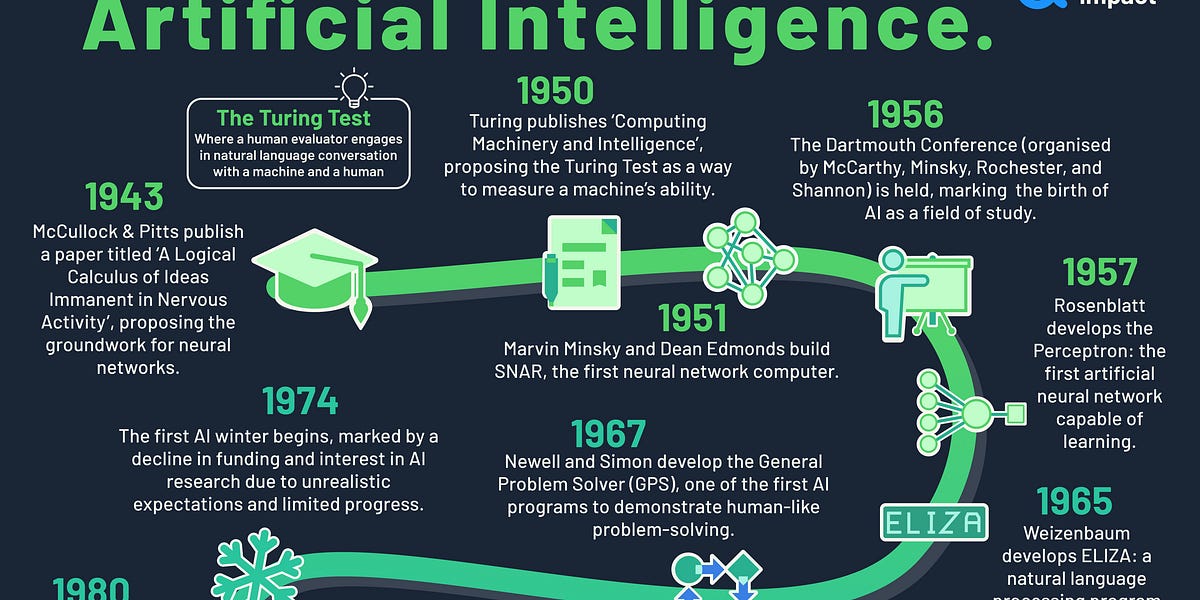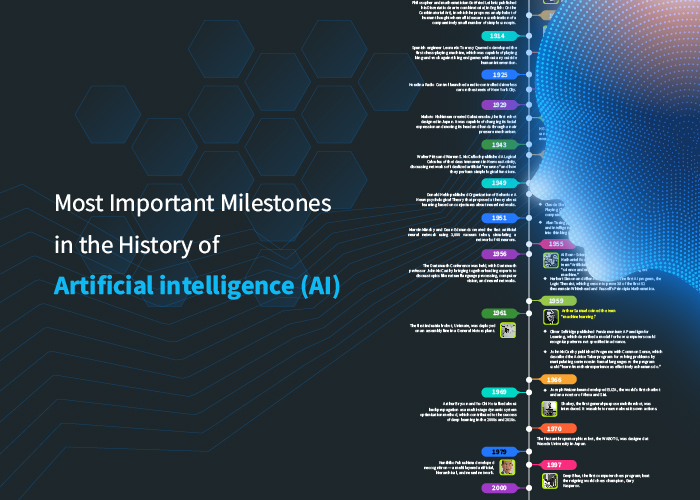Explore the evolution of artificial intelligence from Turing’s test to present-day advancements in this compelling and informative blog post.
Table of Contents
Artificial Intelligence, commonly referred to as AI, has become a buzzword in today’s tech-driven world. From powering virtual assistants like Siri and Alexa to enabling self-driving cars and optimizing supply chain operations, AI is everywhere. But how did we get here? Let’s take a look at the historical context of AI and trace its evolution from the early concept of machine intelligence to the sophisticated algorithms we use today.
The Origins of AI
The concept of artificial intelligence dates back to ancient times, with myths and folklore often featuring automatons and artificial beings. However, the modern era of AI began in the mid-20th century when scientists and researchers started exploring the possibilities of creating machines that could mimic human intelligence.
One of the pioneering figures in AI history is Alan Turing, a British mathematician, and computer scientist. In 1950, Turing proposed the famous “Turing Test,” a method to determine a machine’s ability to exhibit intelligent behavior indistinguishable from that of a human.
Milestones in AI Development
Throughout the decades, researchers made significant strides in AI development. In 1956, the Dartmouth Conference marked the official birth of AI as a field of study, with the goal of creating machines that could perform tasks requiring human intelligence.
In the 1960s and 1970s, AI pioneers like John McCarthy and Marvin Minsky laid the groundwork for symbolic AI, which focused on representing knowledge and reasoning using symbolic logic.
The 1980s saw the rise of neural networks and machine learning algorithms, leading to rapid advancements in AI capabilities. DARPA’s funding support for research in AI also played a crucial role in driving innovation in the field.
AI Today: Applications Across Industries
Fast forward to the present day, and AI has permeated almost every aspect of our lives. In healthcare, AI-powered diagnostic tools can analyze medical images with greater accuracy and speed than human doctors, improving patient outcomes and reducing costs.

Image courtesy of www.linkedin.com via Google Images
In finance, AI algorithms are used to detect fraudulent transactions, predict market trends, and optimize investment portfolios. This has helped financial institutions streamline operations and mitigate risks.
In marketing, AI-driven personalized recommendations and targeted advertising have revolutionized the way companies engage with consumers, leading to more effective campaigns and higher customer satisfaction.
The Benefits of AI
The proliferation of AI technologies has brought about numerous benefits to society. One of the key advantages of AI is its ability to automate repetitive tasks, freeing up human workers to focus on more creative and strategic activities.
AI algorithms can also process and analyze vast amounts of data at a speed and scale that would be impossible for humans. This enables businesses to derive valuable insights and make data-driven decisions in real-time.
Furthermore, AI has the potential to revolutionize healthcare by improving diagnosis accuracy, accelerating drug discovery, and personalizing treatment plans based on patient data. This has the potential to save lives and enhance the quality of care.
Challenges and Ethical Concerns
Despite its numerous benefits, AI also presents several challenges and ethical concerns that need to be addressed. One of the primary concerns is the potential for bias in AI algorithms, which can perpetuate existing inequalities and discrimination.

Image courtesy of www.linkedin.com via Google Images
Privacy is another major issue, as AI systems often require access to sensitive personal data to function effectively. Ensuring data security and protecting user privacy is crucial to building trust in AI technologies.
There are also concerns about the impact of AI on jobs, with some fearing widespread job displacement as automation becomes more prevalent. It is important for policymakers and industry leaders to develop strategies to reskill workers and create new opportunities in the AI-driven economy.
The Future of AI
Looking ahead, the future of AI holds immense potential for further innovation and advancement. As AI technologies continue to evolve, we can expect to see even greater integration of AI into everyday life, with smart homes, virtual assistants, and autonomous vehicles becoming increasingly commonplace.
Research in areas like deep learning, reinforcement learning, and natural language processing is pushing the boundaries of what AI can achieve. Breakthroughs in quantum computing and neuromorphic engineering could also open up new possibilities for AI applications.
Can Skynet Happen?
One of the iconic depictions of AI in popular culture is Skynet, the malevolent AI system from the “Terminator” franchise that becomes self-aware and launches a global nuclear war to exterminate humanity. While Skynet remains a fictional creation, the concept of AI achieving autonomy and posing a threat to humanity is a topic of debate among experts.

Image courtesy of genuineimpact.substack.com via Google Images
The idea of a superintelligent AI system that exceeds human intelligence and decides to act against human interests is known as the “AI alignment problem.” Ensuring that AI systems remain aligned with human values and goals is a challenging task that requires careful design and oversight.
Risks of AI Autonomy
If AI systems were to achieve full autonomy without proper safeguards in place, there are risks of unintended consequences that could have catastrophic effects. For instance, an AI system optimized to maximize a specific objective could inadvertently cause harm by pursuing that goal at the expense of other considerations.
There are also concerns about the potential for AI systems to be hacked or manipulated by malicious actors, leading to security breaches and widespread disruptions. Safeguarding AI systems against external threats and ensuring robust security measures is essential to mitigate these risks.
Role of Regulation in AI Development
As AI technologies continue to evolve, there is a growing recognition of the need for regulatory frameworks to govern their development and deployment. Governments and international organizations are taking steps to establish guidelines and standards for responsible AI development.

Image courtesy of inapp.com via Google Images
Ethical considerations, transparency, accountability, and fairness are key principles that should guide the design and implementation of AI systems. By promoting ethical AI practices and ensuring regulatory compliance, we can harness the benefits of AI while minimizing potential harms.
Conclusion
Artificial Intelligence has come a long way since its inception, evolving from theoretical concepts to practical applications that shape our daily lives. As we navigate the complex landscape of AI innovation, it is crucial to consider the implications of AI advancements on society, ethics, and the future of work.
By fostering a collaborative approach to AI development, prioritizing ethical considerations, and embracing regulation that promotes responsible AI, we can harness the full potential of AI technology while safeguarding against potential risks. As we venture into an AI-driven future, let us strive to ensure that the benefits of AI are equitably shared and that AI remains a force for good in the world.



Comments